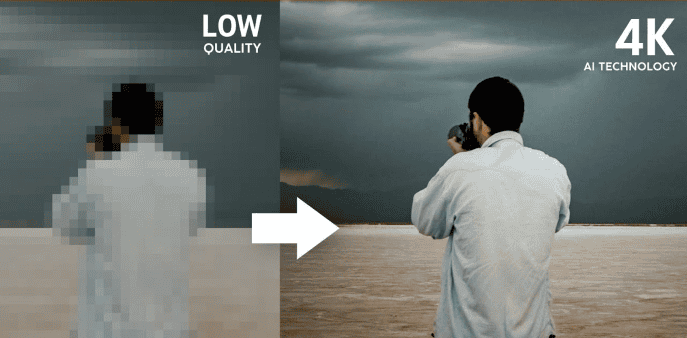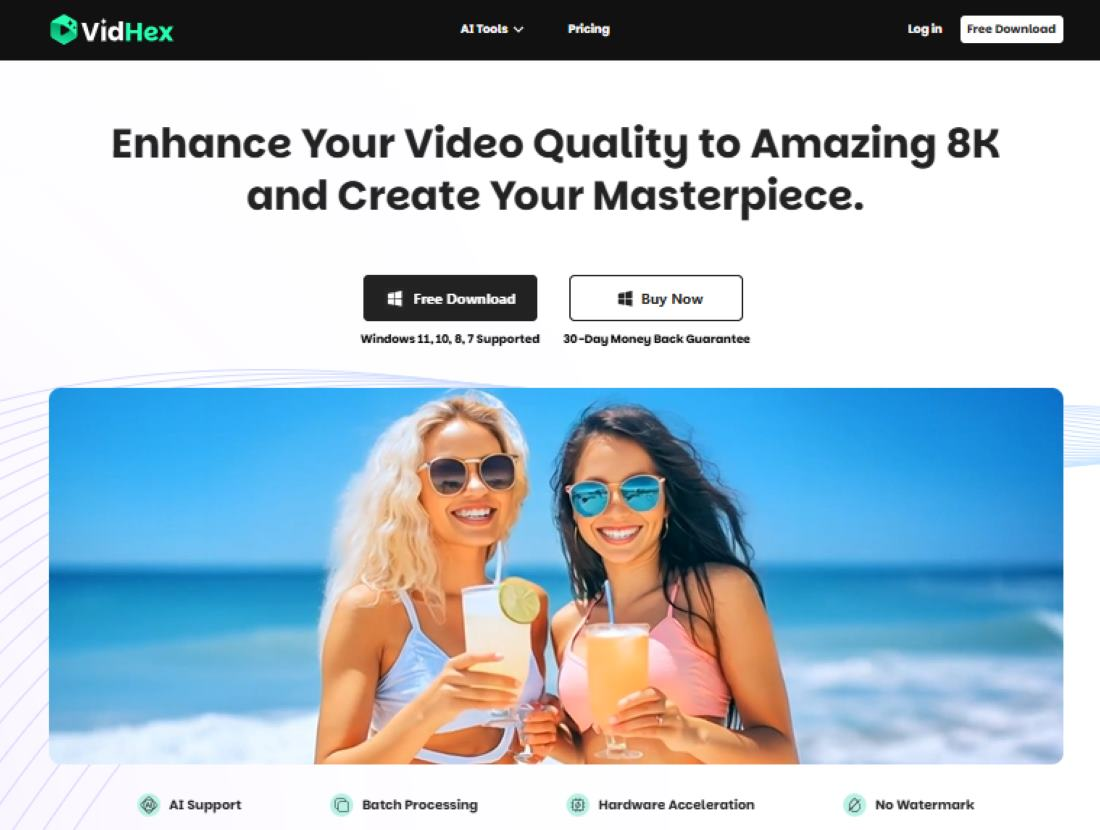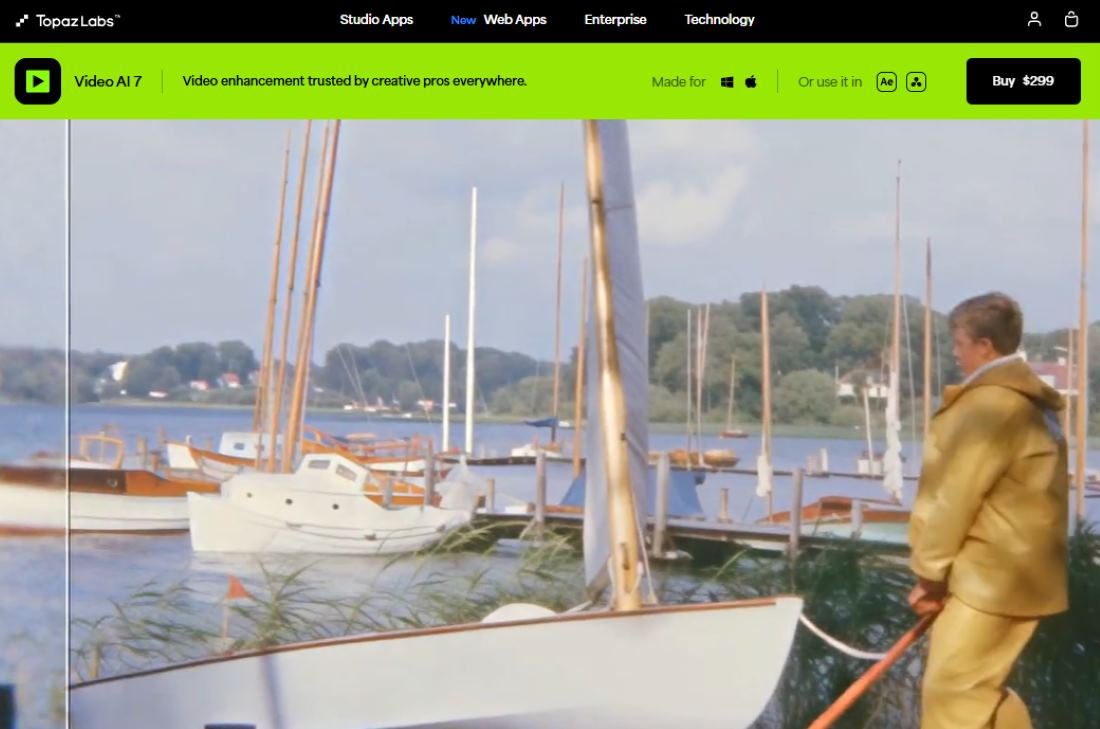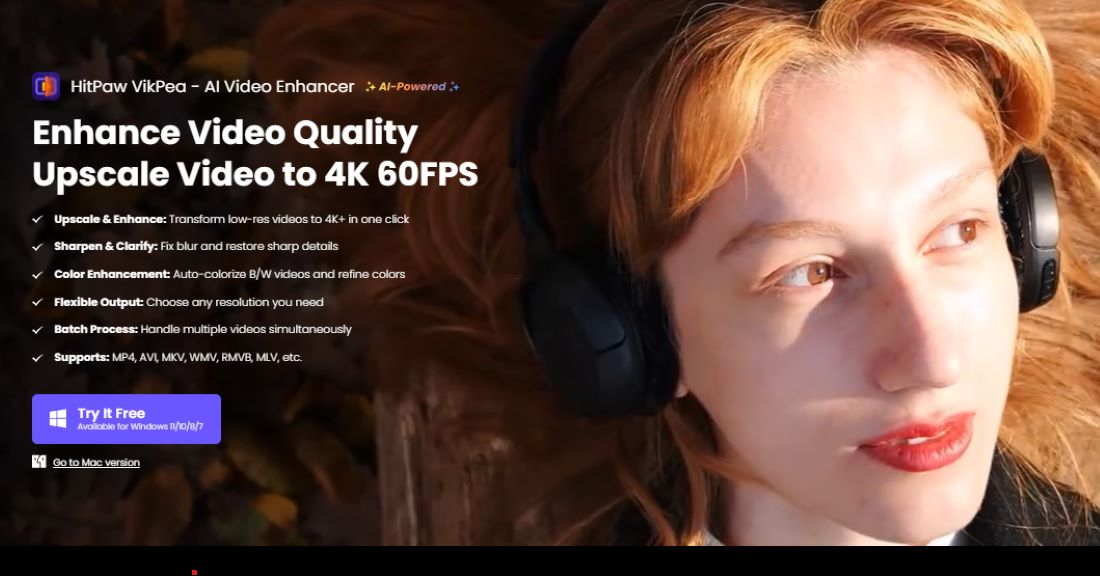In today’s content-driven world, video quality matters more than ever. Whether you’re a filmmaker, YouTuber, gamer, or just preserving old family footage, having high-resolution, sharp, and smooth videos makes all the difference.
This is where AI video enhancers come in — powerful tools that use artificial intelligence to upscale and enhance video quality automatically.
What is Video Enhancers
Development Background
It is common to see blurry, shaky or other unsatisfying recordings in lives. Such problems hinder us from enjoying happy moments.
- Legacy Content: Billions of hours of low-resolution footage, such as VHS, early digital cameras, and DVDs, became unwatchable on modern 4K/8K displays. They often present as colorless, jagged, or even pixelated.
- Compression Artifacts: People like to download and share videos on social media. However, streaming and storage constraints degrade videos with noise, blur, and pixelation.
- Technical Changes: Manual restoration in tools like Adobe Premiere requires expertise and is time-prohibitive, while machine learning has made great breakthroughs. It enables intelligent reconstruction beyond traditional upscaling. —
With the above conditions, AI video enhancer is designed to solve those limitations in digital video.
How do They Work?
The process of enhancing videos with AI tools is AI-powered reconstruction. The core principles involve frame-by-frame analysis and generative AI. At the first stage, Models ingest millions of video pairs to learn patterns, like textures, edges and motion.
Then they will decompose each frame to identify objects, textures, noise, and motion trajectories. After that, AI can process upscaling, denoising, motion enhancement, and detail recovery. A high-quality video is, thus, generated.
Target Audience
- Filmmakers and Archivists: AI tools perform well in restoring classic films and documents.
- Content Creators: With AI video enhancers, they are empowered to improve low-light vlogs, drone footage, or old streams for YouTube and TikTok.
- Animators and Designers: People can use AI to upscale and clean animations or game assets. It contributes to a perfect result with low costs.
3 Useful AI Tools to Enhance Video Quality
VidHex
VidHex is a great AI-powered video enhancement solution designed to improve video quality through automated processing. Its core functionality revolves around leveraging AI to perform tasks like upscaling resolution, reducing noise and compression artifacts, sharpening details, and interpolating frames to increase smoothness. Accordingly, a variety of models are provided here.
Then you can upload a video and select desired enhancement settings, making targeted improvements. The model will analyze the content, reconstruct missing details during upscaling, identify and remove visual noise like grain or blackness caused by low bitrates.
Also, it will generate intermediate frames to create smoother motion, especially beneficial for older footage or action sequences.
What’s more, VidHex often supports batch processing, 8K upscaling, and 8X enlargement without a watermark. Its strength lies in making high-quality video enhancement accessible without requiring deep technical expertise in manual editing software.
Users can make quick quality boosts for personal videos, archival footage restoration, or preparing content for larger screens. You can download it on Windows for free.
Topaz Video Enhance AI
Topaz Video Enhance AI is a specialized desktop application for video upscaling and restoration. Its primary function is to increase video resolution and output HD video. The software features in intelligently recovering detail and reducing artifacts, far surpassing traditional upscaling methods.
It utilizes multiple AI models optimized for specific tasks, like general detail, grain reduction and fine-tuning. Users can choose the most suitable AI model based on the source material’s characteristics.
Topaz excels at reconstructing realistic textures and details during upscaling, making it invaluable for restoring old films, improving low-resolution footage for modern displays, and enhancing drone or archival video.
It handles severe noise and compression artifacts effectively. However, it demands a powerful GPU highly recommended), and has some demerits, such as long processing times and simple features. You have to consider those before using the tool.
It’s a good choice for videographers and professionals needing the highest possible fidelity gains from suboptimal source material.
HitPaw Video Enhancer
HitPaw Video Enhancer offers a user-friendly, AI-driven approach to video quality improvement, catering to both casual users and semi-professionals seeking accessible enhancement tools. Its core optimization functions include AI upscaling, noise reduction, sharpening, and stabilization.
They are all bundled within a straightforward interface. When processing videos with AI, HitPaw Video Enhancer also allows users to adjust intensity sliders, perfecting the result as much as possible. The software emphasizes ease of use and speed, often providing fast processing times by leveraging optimized AI models, though potentially at a slight trade-off in ultimate fidelity compared to some tools.
It supports a wide range of input and output formats, making it versatile for different workflows. It also introduces one-click presets and specialized AI models for different content types, especially useful for cartoons and portrait videos.
While powerful, its enhancements might not realize a perfect detail reconstruction, and its free version typically includes watermarks. It’s ideal for quickly improving home videos, social media content, online footage, and older digital recordings without a steep learning curve. It is available on Windows and macOS.
Suggestions for Perfect Video
To get a satisfying video, you’d better make some preparations. It is also important to learn how to choose an AI enhancer to refine it. A clear guide is provided here.
Pre-Shooting
- Plan Your Shots: Before taking a video, you are supposed to script scenes, identify key angles and scout locations for lighting challenges.
- Gear Setup: To avoid shaky footage, it is suggested to use tripods. For lens or camera, it should be set in 4K+ resolution. And enable LOG or RAW profiles.
- Lighting Control: If you are going to take a landscape recording, you’d better pick a good time for the best natural light. If you have to make a video indoors, you can use lighting panels or flashlights to avoid dark effects.
Post-Shooting
- Supported Video Formats: Before using an AI video enhancer, you must check the video format it supports.
- System Requirements: AI tools vary in platforms. Ensure your device is compatible with the software.
- Core Features of the AI Video Enhancer: If you want the best effect of a video, select and use AI tools according to their primary features.
FAQs
What results can I realistically expect from AI video enhancement?
AI video enhancers are able to upscale 720p to 4K, generating a high-quality video with sharper edges and stable effects. Also, it realizes moderate gains, which involves color correction and deblurring. No matter it is an old recording or a compressed video, AI video enhancers are always your good helpers to improve it.
Can I use AI enhancers on a low-end PC?
Different software has system requirements. You can choose one in accordance with personal conditions. Basic tools with light features may run on integrated GPUs, like Intel Iris, though you may experience slow HD processing. In contrast, Pro tools, like Topaz Video Enhance AI, require more dedicated GPUs for 4K+ workflows.
Conclusion
AI video enhancers leverage advanced neural networks to transform subpar footage into high-quality content. They analyze frames to reconstruct lost details, upscale resolutions, reduce noise, and smooth motion.
And this article offers three top AI tools to improve your video quality. Besides, you can adjust conditions, like lighting and cameras, to avoid bad effects in advance.




